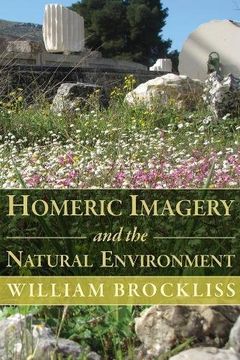Share
Homeric Imagery and the Natural Environment (Hellenic Studies Series) (in English)
William Brockliss (Author)
·
Center For Hellenic Studies
· Paperback
Homeric Imagery and the Natural Environment (Hellenic Studies Series) (in English) - William Brockliss
$ 22.80
$ 28.50
You save: $ 5.70
Choose the list to add your product or create one New List
✓ Product added successfully to the Wishlist.
Go to My WishlistsIt will be shipped from our warehouse between
Thursday, June 20 and
Monday, June 24.
You will receive it anywhere in United States between 1 and 3 business days after shipment.
Synopsis "Homeric Imagery and the Natural Environment (Hellenic Studies Series) (in English)"
Responding to George Lakoff's and Mark Johnson's analysis of metaphor, William Brockliss explores the Homeric poets' use of concrete concepts drawn from the Greek natural environment to aid their audiences' understanding of abstract concepts. In particular, he considers Homeric images that associate flowers with the concepts of deception, disorder, and death, and examines the ways in which the poets engage with natural phenomena such as the brief, diverse blooms of the Greek spring. Taken together, such Homeric images present a more pessimistic depiction of the human condition than we find in the vegetal imagery of other archaic Greek genres. While lyric poets drew on floral imagery to emphasize the beauty of the beloved, the Homeric poets used images of flowers to explore the potentially deceptive qualities of bodies adorned for seduction. Where the Hesiodic poets employed vegetal images to depict the stable structure of the cosmos, the Homeric poets set arboreal imagery of good order against floral images suggestive of challenges or changes to orderliness. And while the elegiac poets celebrated the brief "flower of youth," the Homeric poets created floral images reminiscent of Hesiodic monsters, and thereby helped audiences to imagine the monstrous otherness of death.
- 0% (0)
- 0% (0)
- 0% (0)
- 0% (0)
- 0% (0)
All books in our catalog are Original.
The book is written in English.
The binding of this edition is Paperback.
✓ Producto agregado correctamente al carro, Ir a Pagar.

